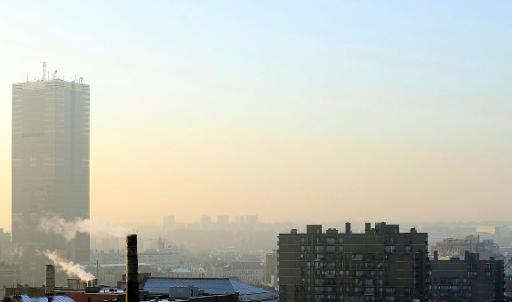The quality of the air in Brussels was nearly two times as bad as that in Manhattan on the days in which the worst levels of air pollution were recorded in both cities, real-time data shows.
On the most polluted day Brussels has seen so far this year, levels of hazardous air pollutants, known as PM2.5 for their microscopic size, were at 75 micrograms (μg) per cubic metre, well beyond the limit of 25μg/m3 allowed by the EU's air quality standards.
The Flemish port city of Antwerp peaked even higher on its most polluted day, with levels of PM2.5 reaching 88μg/m3.
By contrast, PM2.5 levels in Manhattan peaked at 41μg/m3 on the day in which the air in New York City's most populated borough was the dirtiest in 2019, in levels which nearly half those of both Belgian cities.
An interactive tool devised by the New York Times pooled together real-time data from air quality monitoring stations worldwide, allowing readers to compare average levels of air quality measured throughout 2019 in scores of cities and regions worldwide, particularly those with the poorest air quality, such as New Delhi or the US Bay Area.
Related News
- Fine particle exposure can be deadly in the short term: study
- Air quality: EU quarter twice as polluted as pedestrian zone
The data shows that the air in most cities included in the tool ranges from categories going from "unhealthy" to "hazardous" and "extreme."
Based on the EU's air quality standards, the levels of particulate matter (PM) pollutants recorded in Brussels mean residents of the bustling European capital are breathing in air of "very poor quality," the second-worst level on the bloc's air quality index, just before the "extremely poor" quality category.
Several studies have linked exposure to air pollution to heart and respiratory health issues, with the European Environment Agency saying it can also affect the central nervous and reproductive systems and a recent study finding that exposure to air pollution —even for short periods of time— can spike mortality risks in the very short term.
At the time of writing, an online tool of the European Environment Agency, real-time levels of air quality showed that other historically industrial cities like Charleroi, Seraing and Jemeppe fared worse than Brussels and Antwerp in terms PM2.5 pollution, whose ratings rated from fair to moderate.
While 2019 levels of air pollution Belgium trail behind those of the most polluted cities and regions in the world, — including in New Delhi, where air pollution surged to 900 μg/m3 this year, prompting officials to declare a state of emergency — in 2016, exposure to PM2.5-charged air was linked to a total of 7,600 premature deaths in Belgium, out of a total of 374,000 in the EU and 412,000 in the EEA.
Gabriela Galindo
The Brussels Times

